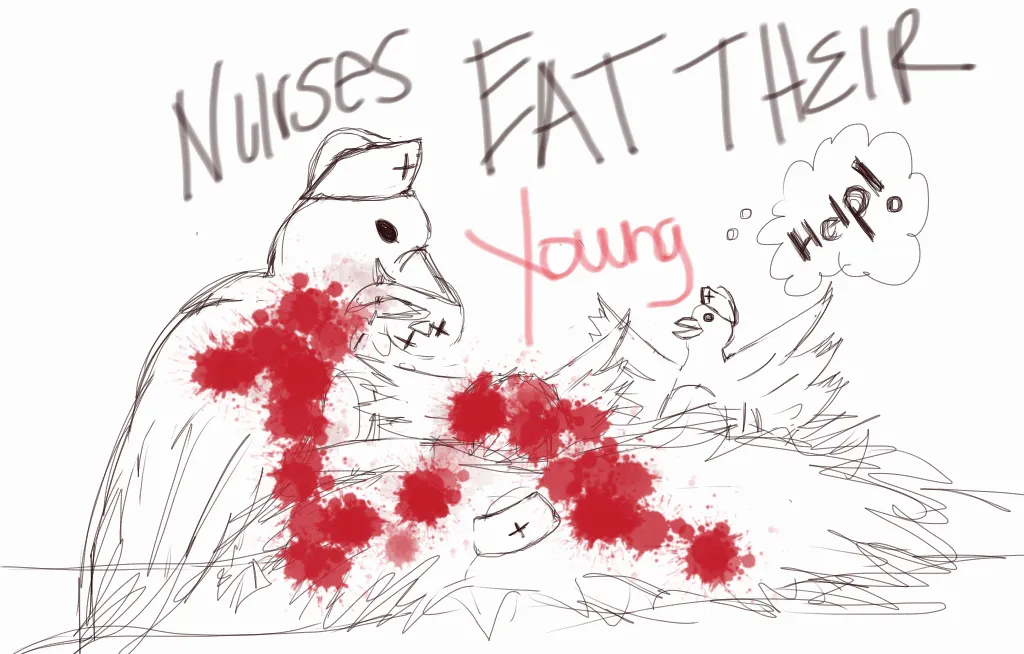Teaching Journal of Nursing

My Teaching Philosophy
Tags: learning teacher teaching
It is imperative in nursing education to develop a teaching philosophy that presents the perspective of educators about learning, teaching, the learning environment, and clinical teaching, which is at the heart of nursing education.
Read More →
Promoting Respect and an Environment of Civility in the Classroom
Tags: behavior education emotional intelligence learning Nurse Education nursing faculty nursing students respect respectful behavior teaching
Educators today can attest to the lack of student respect shown in their classes. A lack of respect is a form of incivility. Since returning to in-person learning, respect has taken a nosedive. In fact, most of us have witnessed an increase of incivility in all walks of life. The question is, what to do about it? At a community college in upstate NY, the School of Nursing, Health & Wellness also noted a lack of respect displayed among students. The lack of respect was an issue the school felt strongly needed to be addressed. This prompted the creation of a Respect Committee with representatives from the Nursing Program, the Occupational Therapy Assistant Program and the Exercise and Human Performance Program to address the issue of student disrespect. To address the issue, the committee sent out a brief confidential survey to faculty and staff to investigate the prevalence of student disrespect, the facultys’ comfort with addressing student disrespect and established strategies for faculty to help guide them to promote a respectful environment for both teaching and learning.
Read More →
The Virtual Professor
Tags: college nursing faculty online learning students teaching virtual learning virtual professor
Today many colleges are increasingly using online approach to provide effective and easily accessible education to attract students from wide geographic areas and increase enrollment. The virtual professor is constantly required to monitor and supervise students who are not visible in a virtual learning community.
Read More →
The Importance of Educating in Real-Time
Tags: acute care critical thinking educating nursing education patient care patient safety perioperative teaching
Working in the acute care hospital, provides many opportunities to learn. As healthcare workers, we must recognize and act quickly on any situation that puts a patient at risk. A recent situation occurred in the hospital that required both the need to act and to provide education in real-time.
Read More →
Preparation of Faculty in the Era of Educational Technology
Tags: educational technology nursing education nursing faculty teaching technology barriers
While online nursing education programs are on the increase, faculty is constantly challenged to teach effectively in online environment. Preparation of nursing faculty in educational technology provides avenues for successful online teaching.
Read More →
My Teaching Learning Philosophy
Tags: learning philosophy students teaching virtual learning
My philosophy of teaching learning revolves around the profound belief of Peter (1965). I strongly believe there are certain responsibilities of teachers to make teaching learning effective. First of all, educators must create a difference between education and teaching. Secondly, teaching learning process must be student centered. It must provide opportunity to students to learn according to their interest and needs. Further, students are also responsible for their own learning. Based on my teaching learning philosophy, I can recommend to bring immediate change in our teaching learning environment we need power and authority which now I can bring as a nurse educator.
Read More →
Provision of Effective Patient Education: A Learning Clinical Experience
Tags: barriers information patient education teaching
Patient education is one of the fundamental aspects of holistic nursing care. It is the core responsibility of nurses to provide information to the patient and their families that is understandable and appropriate promoting awareness and optimal health. However, student nurses come across to various barriers in providing effective patient education, including decrease knowledge, lack of clear objectives and lack of clinical exposure. Similarly, I came across a similar situation in my community rotations in which I faced obstacles in educating the patient. There are several strategies that results in the provision of effective patient education, which includes, open communication style, written instructions, addressing barriers, formulating teaching plans, identifying learning styles and needs, and use of teaching aids. Therefore, through effective patient education nurses can increase the independence of client for self care in hospital as well as in community settings.
Read More →
Reflections of Nurse Educator
Tags: assertiveness Nurse Educator nursing teaching
Teaching is an art. Some people are born teachers while others acquire the skill. To be a great teacher, one has to have a sense of humor and be very flexible. Teachers will never teach to gain monetary reward. However, they will teach to achieve the best reward - satisfaction that they have an impact on the education of the leaders of the world, the training of CEOs, and the success of new breed of professionals. Teaching is a noble profession.
Read More →
Rising to the Challenge of Nursing Education
Tags: clinical clinical experience education future of nursing healthcare system nurse shortage nursing faculty students teaching
As the nursing shortage and nursing faculty shortage continue, it is imperative that we look to innovative measures in order to increase the number of available baccalaureate prepared nurses. At the same time, it is crucial that we do not neglect the quality of education required to receive the Bachelor of Science in Nursing degree. This paper examines potential solutions to the ongoing nursing shortage.
Read More →
Teach Your Children CPR
Tags: adolescents children cpr teaching
CPR is a skill most anyone including our own children can learn. It is a skill that needs to be taught in all schools. We should not underestimate our youth being able to save someone's life by performing CPR.
Read More →
Reducing Lateral Violence: A humanistic educational approach
Tags: bullying education Lateral Violence new graduate nurses reducing violence teaching violence
We’ve all witnessed it: the gossip, backbiting, and bullying that too often occurs in the nursing workplace. Lateral violence (LV), also known as horizontal violence or workplace bullying, consists of behaviors including “bullying, intimidation, sarcasm, back-stabbing, criticism, exclusion, and various forms of unequal treatment”. LV has been a topic of ongoing topic of concern in nursing for many years and is particularly prevalent in female dominated professions. LV is often attributed to oppression theory, which states that nurses are an oppressed group because they are deemed less important than others (such as medical practitioners); therefore, nurses often lack autonomy and control over their profession which results in powerlessness and displaced aggression towards other nurses.
Read More →
The Importance of Supporting Mothers Who Breastfeed
Tags: breastfeeding cessation importance mother pediatrics teaching woman women
There are many health benefits to breastfeeding children such as lower mortality rates, ideal nutritional values, and long term benefits such as healthy weights and higher intelligence later in life. The positive aspects of breastfeeding extend to maternal health as well, such as lower rates of breast and ovarian cancers and decreased occurrences of post-partum depression.
Read More →
Where are the Children? Pediatrics in an integrated format
Tags: child children pediatric pediatrics students teaching undergraduate
Integrating pediatric content is a challenge to nurse educators. Limited information exists regarding the most effective method of teaching pediatrics. Nurse educators disagree on placement of pediatric content. Pediatric concepts are at risk of getting lost or deemed unimportant as other concepts are expanded. This article will examine the experience of educators in a nursing program that integrated pediatric content. The benefits and disadvantage of teaching pediatrics in an integrated format will be discussed.
Read More →
Nursing Students Readying to Save Lives
Tags: active learning care health myocardial infarction nursing patient outcomes simulation students teaching
Recognizing the findings in a patient with an impending myocardial infarction (MI) and intervening appropriately is essential for healthcare providers in improving patient outcomes.
Read More →Get Published for Free
Browse by Tag
advocate aging anesthesia behavior cardiac care Case Study child children clinical compassion COVID-19 critical care death diabetes disease education emergency department end of life ethical principles ethical values ethics future of nursing health health care ICU medication mental health nurse Nurse Education nursing nursing education nursing ethics nursing faculty nursing school nursing students PACU patient care patient outcomes patient safety pediatric poem profession risk factors stress student nurse students teaching therapy treatment
Most Popular Last Month
More from RN Journal
Caring Behavior of Nurses in Orthopedic Wards of Selected Health Institutions As Perceived by Patients
Female R.N.'s: You May Be Working for Less Pay than Your Male Counterparts
Take A Minute to Listen, It Could Save a Life
Critical Care Chronicles
When does treatment become a life sentence?
Cortical Dynamics as a Therapeutic Mechanism for Touch Healing
I Quit My RN Job Yesterday
The Importance of Supporting Mothers Who Breastfeed
Clinical Profiling: Natural History of Essential Hypertension









